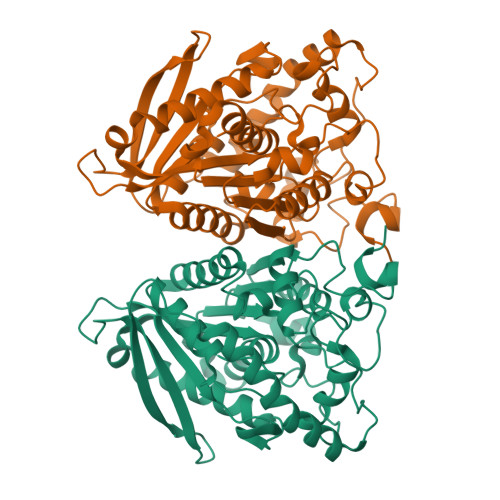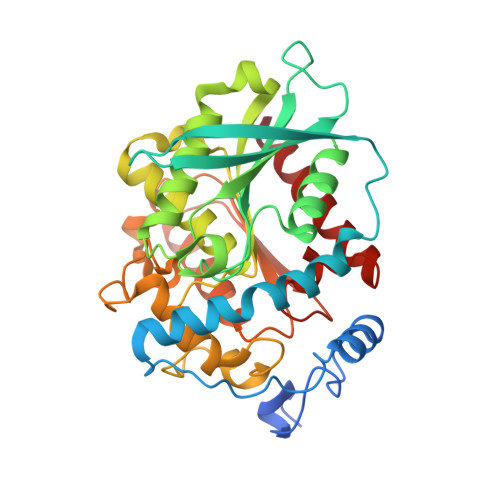Structural and functional analyses of a bacterial homologue of hormone-sensitive lipase from a metagenomic library
Ngo, T.D., Ryu, B.H., Ju, H., Jang, E., Park, K., Kim, K.K., Kim, D.H.(2014) Acta Crystallogr D Biol Crystallogr 69: 1726-1737
- PubMed: 23999296
- DOI: https://doi.org/10.1107/S0907444913013425
- Primary Citation of Related Structures:
4J7A - PubMed Abstract:
Intracellular mobilization of fatty acids from triacylglycerols in mammalian adipose tissues proceeds through a series of lipolytic reactions. Among the enzymes involved, hormone-sensitive lipase (HSL) is noteworthy for its central role in energy homeostasis and the pathogenic role played by its dysregulation. By virtue of its broad substrate specificity, HSL may also serve as an industrial biocatalyst. In a previous report, Est25, a bacterial homologue of HSL, was identified from a metagenomic library by functional screening. Here, the crystal structure of Est25 is reported at 1.49 Å resolution; it exhibits an α/β-hydrolase fold consisting of a central β-sheet enclosed by α-helices on both sides. The structural features of the cap domain, the substrate-binding pocket and the dimeric interface of Est25, together with biochemical and biophysical studies including native PAGE, mass spectrometry, dynamic light scattering, gel filtration and enzyme assays, could provide a basis for understanding the properties and regulation of hormone-sensitive lipase (HSL). The increased stability of cross-linked Est25 aggregates (CLEA-Est25) and their potential for extensive reuse support the application of this preparation as a biocatalyst in biotransformation processes.
Organizational Affiliation:
Department of Molecular Cell Biology, Samsung Biomedical Research Institute, Sungkyunkwan University School of Medicine, Suwon 440-746, Republic of Korea.



















